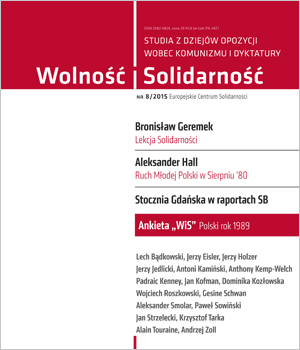Najdłuższy dzień
The Longest Day
Author(s): Tomasz KozłowskiSubject(s): History, Recent History (1900 till today), Special Historiographies:, History of Communism
Published by: Wydawnictwo Uniwersytetu Jagiellońskiego
Summary/Abstract: One of the decisive moments during the protests of August 1980 at the Lenin Shipyard in Gdańsk was the end of the so-called “little strike” and the announcement of a sympathy, solidarity, strike. The management’s capitulation under pressure from the protesters and their promise to meet their submitted demands surprised the Strike Committee, whose members, especially those favoring the management, voted on August 16th to end the protest action. The majority of the shipyard workers, who had been fighting for higher wages, a free trade union and work for their dismissed colleagues, Anna Walentynowicz and Lech Wałęsa, did not understand the need to continue the protest in solidarity with the workers of other establishments. Nevertheless, they managed to start the sympathy strike thanks to the activists from the democratic opposition who appealed to the workers to remain at the shipyard. In order to continue the strike, it was necessary to form a new leadership and to record thae demands that were common to all the workplaces. This is how the Inter-Enterprise Strike Committee (Międzyzakładowy Komitet Strajkowy, MKS) came to be, bringing together representatives from workplaces in the Tri-City area and drawing up the list of 21 demands, which is now a part of UNESCO’s World Heritage Registry. This article focuses on the circumstances surrounding the ending of the so-called “little strike,” the start of the sympathy strike and the formation of the Inter-Enterprise Strike Committee. The author looks into the various, sometimes contradictory versions of the events as described by witnesses and compares them with the existing documentary evidence.
Journal: Wolność i Solidarność
- Issue Year: 2015
- Issue No: 8
- Page Range: 102-113
- Page Count: 12
- Language: Polish

